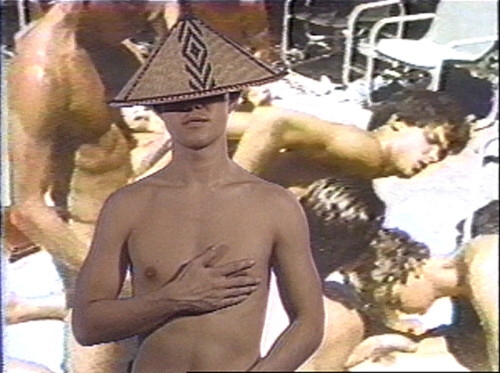Juxtaposing archive materials, pop-cultural artefacts, objects and artworks (by 39 artists or artist groups from around the world), Ten Million Rooms of Yearning. Sex in Hong Kong continues Para/Site’s research- and narrative-based approach to exhibition-making. As implied by its title, this show is both sensual and provocative.
The decision to spread it through five different venues is both an obvious solution to Para/Site’s limited exhibition space and a thoughtful curatorial strategy to weave the fabric of the city’s urban characteristics into the viewing experience. Many of the sites, such as the Civic Centre Exhibition Hall and a private flat in Sheung Wan, are not the ‘usual’ contemporary art venues. Indeed, during the monsoon season (generally June to October in Hong Kong), the experience is further enhanced by the feverish, moist and sticky sensations on one’s skin as it is enveloped by the extra-humid air when walking up and down the hilly and narrow alleyways from venue to venue, entering highrises via often-claustrophobic stairways or elevators.
The representation of sexuality and eroticism serves as a starting point for an examination of the transformation of historical, social and urban conditions in Hong Kong and how they challenge the understanding of identity, human interactions and humanity in general. The late Brazilian artist Hélio Oiticica’s 1970s studio-apartment in New York City is restaged in the private flat. During his self-imposed exile in New York, living in precarity, Oiticica spent a substantial amount of time reflecting, writing and producing in this intimate yet oppressive domestic setting, which he referred to as ‘Babylonests’. The reconstruction of the ‘Babylonests’, on the one hand, reinterprets Oiticica’s complex attitudes towards sexual politics, reflected by his rejection of the heteronormative mainstream and suspicion about the liberal narrations of social progress constructed by the metropolitan bourgeois bohemians; on the other hand, it proposes to draw a connection between the social conditions of two distinct cities in two different eras through these propositions and a consequent sense of alienation.
Despite the artist’s eerie depiction, sexual and reproductive acts are demystified and reduced to the most basic animal instincts in Zhou Tao’s series of untitled drawings, shown at Para/Site’s main space. With sex placed alongside breathing, digesting and excreting, viewers are left to consider themselves as equal to any other ordinary living entity and its struggle to survive. Together with his video Collector (2012), the artist invites a nonanthropocentric perspective that directs us to seek new forms of relations between animals, human things and places. From a feminist perspective, Ines Doujak’s series of untitled photographic and collage works place queer sexuality against historical backgrounds to investigate the norms of human behaviour as structural and constituent elements of society. Appropriating footage from gay erotic videos produced in Eastern Europe since the introduction of capitalism, The Fall of Communism as Seen in Gay Pornography (1998), by William E. Jones, captures a moment when different ideologies collapsed, leading to a commentary on desire, the commodification of sex, vulnerability and power relationships.
In the context of the show, popular culture influences such as filmmaker Wong Kar-Wai’s alluring footage of Hong Kong (excerpts from In the Mood for Love, 2010) and novelist Eileen Chang’s witty sketches of quintessential modern women are juxtaposed with artworks by historical and contemporary artists. In doing this, the exhibition is able to transform a body of rich visual materials, in a wide range of media, into an idiosyncratic system of image-text. The making of the exhibition therefore creates horizontal connections, from site to site, across social space and time, to broaden the reading and presentation of artworks from a singular art-historical discourse to a visual culture multiplicity.
This article was first published in the Autumn & Winter 2014 issue of ArtReview Asia
